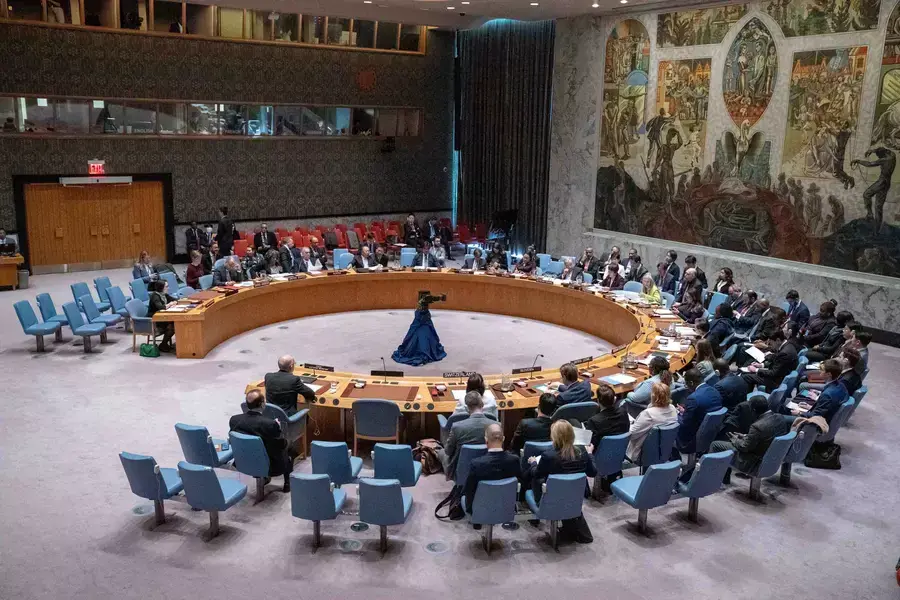The President’s Inbox Recap: Confronting the Nuclear Threat

The latest episode of The President’s Inbox is live. Jim sat down with W.J. “Bill” Hennigan, correspondent for the opinion section of the New York Times, to discuss the threat of nuclear weapons amid rising great power competition.
Confronting the Nuclear Threat, With W.J. Hennigan
W.J. Hennigan, a correspondent for the Opinion section of the New York Times, sits down with James M. Lindsay to discuss the risk of nuclear war in an era of growing geopolitical competition.
Here are five highlights from the conversation:
1.) The world has entered a new nuclear age. Bill argued, “after more than a quarter-century of relative peace in the nuclear domain, we've encountered a number of different troubling developments.” All the world’s nuclear powers are modernizing their weapons arsenals. The only remaining arms control treaty between the United States and Russia—the NEW START treaty—has been suspended. At the same time, major wars are unfolding in Europe and the Middle East and concerns about possible conflicts on the Korean peninsula and over the Taiwan strait are growing.
More on:
2.) A mutual lack of willingness to discuss limits on nuclear arms may be the most worrisome development. Neither China nor Russia has expressed interest in arms control talks. Despite the New START treaty expiring in 2026, Bill noted that Russia is unwilling “to take up the White House’s offer to start negotiating follow-on treaties.” At the same time, China is rapidly expanding its nuclear stockpile, abandoning its long-time minimum deterrence posture. The Pentagon estimates that China could have 1,000 warheads by the end of the decade and 1,500 warheads by 2035. Bill acknowledged, “we’re really on the cusp here of going to the bad old days of having unrestricted stockpiles.” He added that “there will be calls… [in the United States] to have as many nuclear weapons as both Russia and China combined because of the stronger ties that you see between those two nations. Whether or not you buy into that or not, doesn’t matter, but the fact [is] that we are headed in the opposite direction” of efforts for “continual reductions since 1972.”
3.) It takes time and a lot of dialogue to hammer out arms control agreements. Mutual distrust and the fear of giving an adversary the upper hand makes it hard to negotiate limits on nuclear weapons. The successes in U.S. arms control with the Soviet Union and then Russia took place over decades. The way Bill put it, “these treaties are not born out of one or two meetings. They’re born out of years of spade work and interaction between the diplomats, many of whom developed that trust because trust is not just given. It’s built up over time.” Negotiations will be even more difficult today because Russia and the United States need to consider how China’s growing arsenal changes the nature of the nuclear threat.
4.) The use of a nuclear weapon could be destabilizing globally even if the target country has only conventional weapons. It is easy to see how the use of a nuclear weapon against a nuclear-armed adversary could trigger “tit-for-tat” escalation. But that’s not the only path to escalation. In the case of the Russia-Ukraine war, for example, only Russia has nuclear weapons. However, a Russian decision to use a nuclear weapon against Ukraine would pressure the United States and its European allies to respond. That initial response may be conventional, but it would likely prompt a counter-response, and so on. As Bill noted, “it’s hard to get off that [escalation] ladder once you’re on it.”
5.) In the United States, the decision to launch a nuclear weapon lies solely with the president. Bill calls the United States a “nuclear monarchy.” Presidents may consult cabinet members, top military advisors, or congressional leaders, but nothing requires them to do so. Moreover, members of the military are required to follow orders that are legally issued. Bill raised the concern that a future president might decide to use a nuclear weapon “out of hand.” To prevent that possibility, Bill argues that “it makes good sense for the United States to develop, to ensconce the law to do what we think every U.S. president would do, which is bring in his most senior advisors, ask for their advice, and then give an up or down vote on whether or not they think that we should use nuclear weapons first.”
If you’re looking to read more of Bill’s analysis, check out the New York Times’ “At the Brink” series. Bill has written two pieces for the series so far: “Nuclear War Is Called Unimaginable. In Fact, It's Not Imagined Enough” and “How America Made Nuclear War the President's Decision.”
More on:
 Online Store
Online Store